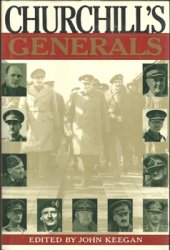NORTHWEST SEAPLANES: 860 W. Perimeter Road, Renton, Washington 98055, United States; Phone (425) 277-1590; Fax (425) 277-8831; Http://www. nwseaplanes. com; Year Founded 1988. NW
Seaplanes is established at South Lake Washington at the Renton Airport in 1988 to operate passenger charters to Seattle/Tacoma International Airport, the San Juan Islands, and Victoria. Additionally, the company operates a variety of charters to various bush and nonscheduled locations, including area lodges, resorts, and fishing hot spots.
In 2000, the fleet features 7 float-equipped de Havilland Canada DHC-2 Beavers and 2 Panther Converted Piper PA-31-350 Navajo Chieftains.
NORTHWEST TERRITORIAL AIRWAYS, LTD. (NWT AIR): Canada (1961-1998). Robert P. Engle forms this carrier in a warehouse in Yellowknife, capital of the Northwest Territories, late in 1961. Employing a lone Douglas DC-3, Engle launches nonscheduled charter services to bush destinations throughout the area in 1962.
In 1963-1967, the operation is gradually enlarged and the fleet is increased by the purchase of four more DC-3s and a Beech 18. All manner of items are transported from husky dogs to cancelled bank checks. A DC-3 begins the carrier’s first scheduled service in 1968 from Yellowknife Airport to Coppermine.
In 1969-1975 , two de Havilland Canada DHC-6-300s and two former Canadian Pacific Airlines, Ltd. DC-6Bs are employed to assist the DC-3s in regular flights to such additional destinations as Holman Island, Cambridge Bay, Gjoa Haven, Spence Bay, Hall Beach, Fort Simpson, Norman Wells, Pelly Bay, and Rankin Inlet. Meanwhile, charter and contract service operations are undertaken for oil and mineral industries. A DC-3 is lost in a crash at Somerset Island, Northwest Territories, on May 13, 1971 and one is withdrawn in 1975.
When International Jet Air, Ltd. of Calgary declares bankruptcy in 1976 , its three Lockheed L-188As are purchased for an average price of C$300,000 and placed in service. A DC-3 is sold that year and one early the next.
Under contract to Dome Petroleum in 1977, an Electra provides contract flights from Calgary and Edmonton to Tuktoyaktuk on the Arctic coast. Although another DC-3 is sold in 1978, Douglas services continue as before; however, the one DC-6B is sold in July.
Having received a license to operate Lockheed L-382G Hercules freighters back in 1973, owner Engle acquires such an aircraft from the South African carrier Safeair Freighters (Pty.) Ltd. under charter in September, basing it in London to undertake gold bullion flights. The DC-6B is employed to inaugurate a new route from Yellowknife to Coppermine via Cambridge Bay in November. In December, the carrier acquires a northern transcontinental route from its base to Frobisher Bay via Rankin Inlet.
The last DC-6B is sold in January 1979 and a second Hercules, also leased from Safeair Freighters (Pty.), Ltd., joins the fleet in May.
An ex-military C-47 is acquired in April 1980. In October, the carrier links its Yellowknife base with the small communities of Pelly Bay, Spence Bay, and Gjoa Haven.
The second leased Hercules is returned in May 1981 leaving the first to operate a Purolator Courier trans-Canada service alone until joined by an L-188AF in July. Meanwhile, in June, an ex-Pacific Western Airlines, Ltd. (PWA) L-382B is acquired. Having acquired the former PWA Winnipeg-Yellowknife service, also in June, Electra flights are introduced over that route in August.
Austin Airways, Ltd. now inherits the Purolator Courier contract that NWT Air can no longer fulfill. Significant route expansion begins in December. Two new routes are opened from Winnipeg—to Rankin Inlet and Yellowknife and to Yellowknife direct. Additionally, the DC-3 fleet, stabilized at five, opens services from its base to Fort Liard and Fort Nelson via Fort Simpson.
A former Pacific Western Airlines, Ltd. (PWA) L-100-20 catches fire while unloading a cargo of gasoline at a point 200 mi. E of Inuvik on April 11, 1982; although the aircraft is destroyed, its crew escapes injury.
After the failure of Swiftair Cargo, Ltd., the company, beginning in October, assumes the defunct carrier’s transcontinental all-cargo route. Nightly, three leased L-188s from opposite directions fly the Toronto, Winnipeg, Edmonton, and Vancouver return service. Domestic and scheduled services continue across the Northwest Territories and to points in Manitoba, British Colombia, Alberta, and Ontario. The Hercules undertakes occasional outsized cargo charters to destinations outside of Canada.
An ex-Imperial Oil Electra joins the fleet in June 1983 and in December of that year, the leased Safeair Freighters (Pty.), Ltd. L-382G is returned when the last available PWA L-382G is purchased.
The fourth and fifth Electras join the carrier’s fleet in May 1984, allowing NWT Air to take over Air Canada, Ltd.’s high priority Gold Label Vancouver9Toronto night courier service flown via Calgary, Edmonton, and Winnipeg. The following month, weekly DC-3 service is initiated between Cambridge Bay and Homan Island and between Hall Beach and Pelly Bay. The direct Winnipeg-Frobisher Bay run is discontinued.
The stops on the trans-Canada night cargo run are rearranged somewhat in April 1985 and a DC-3 cargo frequency is opened between Edmonton and Calgary. A City Express, Ltd. Saunders ST-27 is wet-leased to link Montreal and Ottawa with the Toronto cargo terminal. The Hall Beach-Pelly Bay service ends in October, being replaced by flights from Pelly Bay to Gjoa Haven. Airline employment is now 140.
In March 1986, the carrier’s cargo operation is pooled with that of Air Canada, Ltd. into a joint venture delivery system, allowing first-time initiation of overnight cargo services to various destinations in the Northwest Territories. In September and October, two Electras are sold to Falcon Cargo, A. B. in Sweden and are replaced by an L-188A formerly flown by Reeve Aleutian Airways. Another L-188A is leased from Reeve for 10 months in February 1987. The following month, the company joins the “Air Canada Connector” commuter network and in April begins feeder services from Edmonton-Yellowknife and from Cambridge Bay - Coppermine and Holman Island. The state carrier purchases 90% controlling interest in November, with the original owner Robert Engle retaining 10% shareholding.
Toronto is suspended as a cargo terminus in early 1988, leaving NWT Air to fly nightly from Winnipeg-Edmonton via Regina and Saskatoon. Inuvik-Yellowknife-Edmonton L-188A flights begin in the spring and during the summer, thrice-weekly offerings are undertaken between Inuvik and Frobisher Bay via Yellowknife and Rankin Inlet.
A DC-3 is sold in October while a Boeing 737-210C is leased from American Airlines and placed into service in November, the same month an L-188A and the two of the last three DC-3s are sold. During the year, Air Canada assumes 100% ownership.
In early 1989, the decision is taken to concentrate solely on services to the Arctic. In February, another Boeing 737-210C is acquired from American Airlines and the Winnipeg-Yellowknife route is dropped in March. An understanding is reached with First Air, Ltd. to alternate trans-Canada flights north of the 60th parallel and the Edmonton route is extended to Calgary.
The fleet in 1990 comprises 2 leased B-737-210Cs, 3 L-188s, and 1 L-382G Hercules. Founder Engle retires.
Two of the Electras are withdrawn in 1991 and the last Electra is deleted in 1992. Late in the year, the two B-737-210Cs are purchased and a B-737-275C is chartered from American Airlines. In 1993, President/General Manager Dan Murphy oversees a workforce of 160. Destinations visited on a regular basis now include Calgary, Edmonton, Yellowknife, Cambridge Bay, Rankin, and Winnipeg.
The fleet of the “Air Canada Connector” partner in 1994 includes 2 owned B-737-210ACs and 1 each B-737-275C (leased), British Aerospace BAe 146-200, and L-382G (leased). Following Air Canada Ltd.’s January corporate makeover, the carrier spends the remainder of the year changing the color schemes of its aircraft to match.
Operations continue apace in 1995-1996.
On January 10, 1997, 900 pilots from the other four “Air Canada Connector” airlines go on strike over merged seniority lists. NWT Air is not immediately affected, as its flyers do not participate. When the job action is concluded in early March, Air Canada, Ltd. begins a review of its entire regional airline situation. The examination, driven not only by the strike, but by the start up of deep-discount competitors Vistajet, Ltd. and Greyhound Air, Ltd. as well, results in the major’s decision to sell off NWT Air.
Flights under Northwest Territorial Airways continue until June 24, 1998, when the longtime northern pioneer is merged into First Air, Ltd.




 World History
World History









